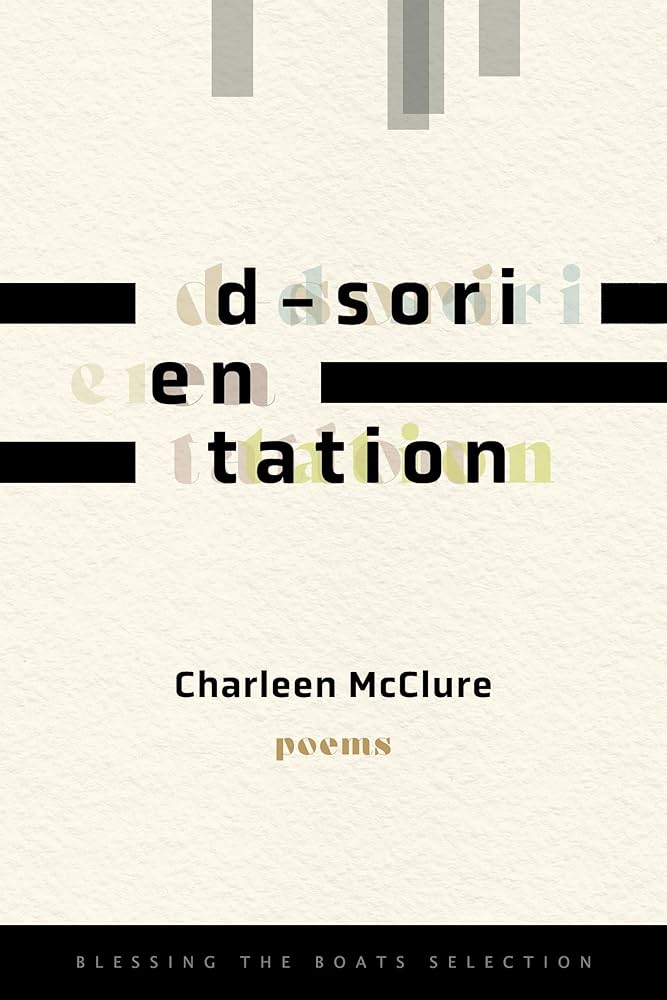d-sorientation | By Charleen McClure | BOA Editions Ltd. | 97 pp. | $18, softcover
Charleen McClure’s d-sorientation is an exploration of space: the expansive empty inside humans and homes, the various rooms of the self, and how it feels to inhabit them. The selves she explores are alive and dying and dead, they are mosquitoes and mothers, and they are pressing their palms to the walls trying to map this space with their hands.
The body is the vessel for this negative space, and it’s both revered and threatened in these poems, as McClure attempts to balance the capacity of the body to be both host and parasite, both mother and child. Organs, flesh, and tongues appear hungry, never satisfied. But arrows pierce skin, engorged bloats burst, bees sting, blood escapes between legs – something must always come out. With all its discomforting corporeal imagery, d-sorientation could have very easily verged into an examination of physical weakness and debility, focusing solely on the vulnerability of the human body rather than the human experience. It’s a testament to McClure’s voice and storytelling that it left me reflecting purely on the latter.
Because that is what this collection is – various stories told over several poems. Two poems tell a brief frustrating glimpse at the conversation between a driver and the policeman who pulled them over for not signaling a lane change. Other poems return to nostalgic imagery and allow the speaker to indulge in the memories. The scenes of home life, of beautiful, glowing domesticity – the familial arc – begin in the very first poem and end in the last, blurring between desire and reality. The strength of d-sorientation is in the intimacy of its scenes, which never coddle their familiarity into redundancy. Images of nursing and caretaking remain complicated and deeply personal affairs, even looking in from the outside. Their earnestness and simplicity communicate the universal truth of outgrowing the home. d-sorientation exhausts all the available room in its home but realizes that it is somehow still not big enough to be impenetrable.
d-sorientation is filled with emptiness, from the preservation of spacing in the original texts of her erasure poems to the many disjointed gaps between thoughts and stanzas. The airiness can be exhausting to push through, and towards the end of the collection, even the slightest enjambment or gap in the form feels unfair – why couldn’t we have all the information together in one place? Applying each fragmented phrase to the larger context of their poem requires more work than reading the phrase as a self-contained snippet before leaping to the next. The isolation, though, makes d-sorientation’s intimacy much more understandable. After all, the experience of reading the collection is so authentic because it allows itself to convey pure yearning, fatigue, and ultimately, disorientation.
– Hannah Lui

